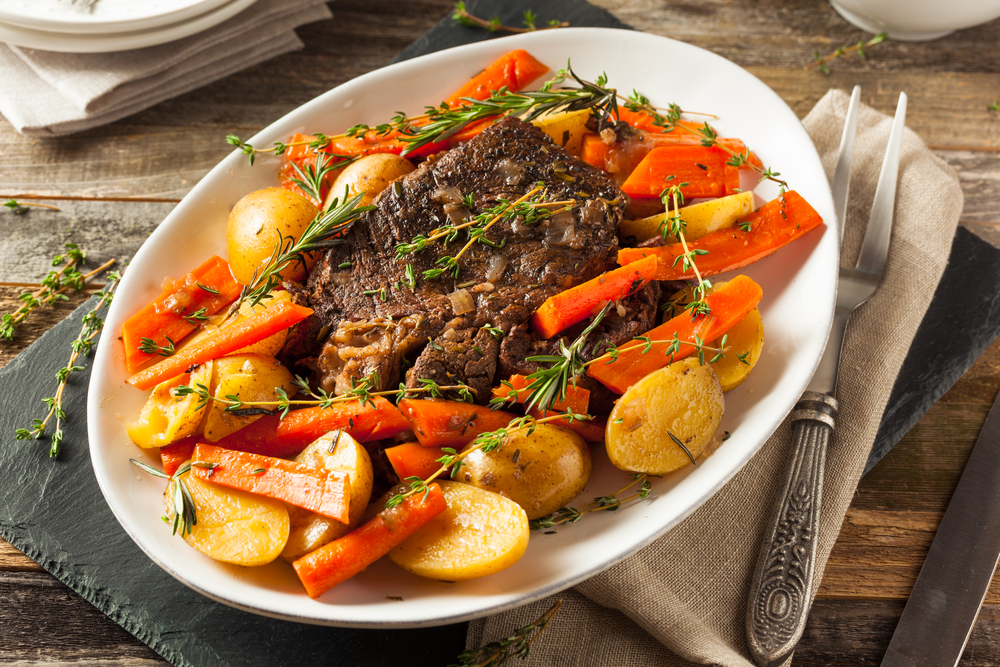Whether you’ve had to throw out your leftover pot roast, or you just want to eat it again tonight, there’s no need to be sad. The slow cooker is the perfect device for reheating a roast, and it’s much easier than you might think.
Reheating any meat so that it tastes like it did the first night is not always an easy feat. Sure you’ll get it warm, but will you sacrifice the texture and moisture to do it?
You don’t want to reheat it too quickly, so the slow cooker is a perfect option. Add a little broth and cook it low and slow (3 to 4 hours) and your roast will taste just as good the next day.
Can You Reheat Roast Beef in a Slow Cooker?
If you’re wondering whether or not it’s possible to reheat roast beef in a slow cooker, the answer is yes. It’s actually recommended that you reheat this type of meat in a slow cooker.
Slow cookers are designed for cooking food slowly over time–they aren’t meant for quick heating or reheating purposes. Meat with high-fat levels like roast beef can easily heat too quickly and become oxidized. Low and slow is the best way to keep your meat tasty and full of juice.
Why Reheat Roast Beef in a Slow Cooker?
Reheating pot roast in your slow cooker is easy, and it’s an especially good option if you’re looking to preserve the flavor of the meat. The slow cooker will keep everything nice and moist as well as warm, so when it comes time for dinner, all you need to do is pull out the pot roast from its container and serve it over fresh pasta or rice.
As we said, low and slow is best. Here’s how to reheat it in the slow cooker for the best results.

How Do You Reheat Roast Beef in a Slow Cooker?
What You’ll Need:
- Slow cooker
- Roast beef
- ½ cup of water or beef broth
- ½ cup of beef gravy
Step 1
Set your slow cooker to warm. Not all slow cookers have a warm setting, if that’s the case then set it to low.
Step 2
Gently place your leftover roast beef in the ceramic pan for your slow cooker.
Step 3
Pour your water or broth and gravy over top of the roast. You need the added moisture to keep your roast fresh as it heats. The added flavors enhance the beef.
Step 4
Place the lid over top and reheat the roast for 2 to 4 hours. How long depends on the size of your roast so check periodically after the 2 hour mark.
Alternative Ways that You Can Reheat Roast Beef Aside from a Slow Cooker
Oven

Seal your roast loosely in aluminum foil and add a few tablespoons of the leftover juice or beef stock if you don’t have any juice. Seal the foil. In an oven preheated to 300 degrees F, reheat your beef to 120 degrees F internal temperature.
Microwave
Slice the leftover roast beef and place it on a plate you know can go in the microwave. You’ll need to drizzle the juice from cooking the roast or beef stock over the slices to help seal in the moisture. Cover tightly with plastic wrap or, if you prefer, a damp paper towel. Microwave at 50% power for 30-second at a time until you feel it’s heated through.
Gravy Bath
Cut your leftover roast into ¼-inch thick slices. While those slices are rising up to room temperature, heat up some gravy (whether new or leftover doesn’t matter). When the gravy reaches a simmer, remove it from the heat before you add your slices of roast beef. Let the beef sit in the hot gravy for 2-3 minutes and serve.
Steaming
Again, slice your leftover roast beef. It’s important you let them rise to room temperature. In your steamer, bring your liquid made from beef stock and add herbs of your choice to a simmer. Add in your beef slices. Continue to steam the meat for about 4 minutes. If you don’t have a steamer, you can use a pot and hold the meat in a sieve or colander.
Conclusion
Yes, you can reheat roast beef in your slow cooker. While some might say it’s not the tastiest way to reheat a roast, it’s definitely easy.
To keep your meat moist and flavorful, cooking it slowly at lower temperatures is always the best.







